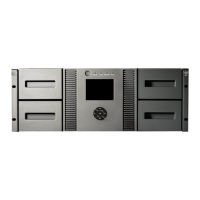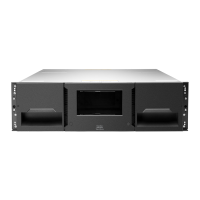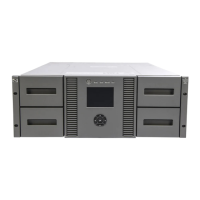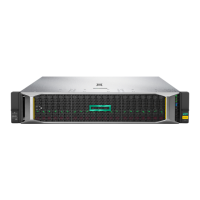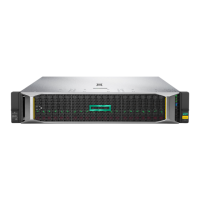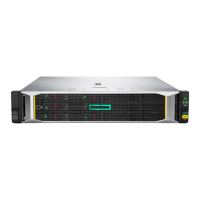Figure 39 Status > Drive page (parallel SCSI)
You can see, but not modify, the following:
• Status of the drive
The drive is operating normally.
The device is functional, but might have an issue that should be addressed.
The drive is in a failed state.
• Cartridge in Drive — information about the cartridge, if any, currently in the drive.
• Drive Error Code — the current drive error code if the drive is in a failed state. See Drive
error codes (page 174) for a list of drive error codes.
• Internal Drive Temperature — internal temperature reported by the drive. The normal
temperature range is provided for reference and varies depending on the type of tape drive.
The tape drive will send out errors if there is any possibility of error due to temperature.
NOTE: The Internal Drive Temperature is not the temperature of the tape path in the drive
nor is this the operating environment temperature.
• Cooling Fan Active — On if the cooling fan is on
• Drive Activity — the current drive activity
• Encryption status — The current status of encryption on the drive.
• Port A Status and Port B Status — current status of the ports
• Speed (Fibre Channel and SAS drives) — the current speed setting of the drive port
• Port Type (Fibre Channel drives only) — the current setting of the drive port. Direct connected
devices are typically Loop. Devices connected to a switch are typically Fabric.
• N-Port ID (Fibre Channel drives only) — Fabric address. Only relevant when in Fabric mode.
• ALPA (Fibre Channel drives only) — Loop address. Only relevant when in Loop mode.
• Hashed SAS address — A short version of the SAS World Wide Identifier (WWI) that is
generated using a well-defined hash algorithm and is suitable for device identification in
most systems. Some management software might report this value.
Using the RMI 63
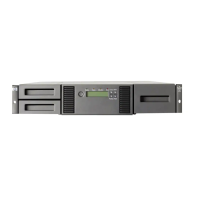
